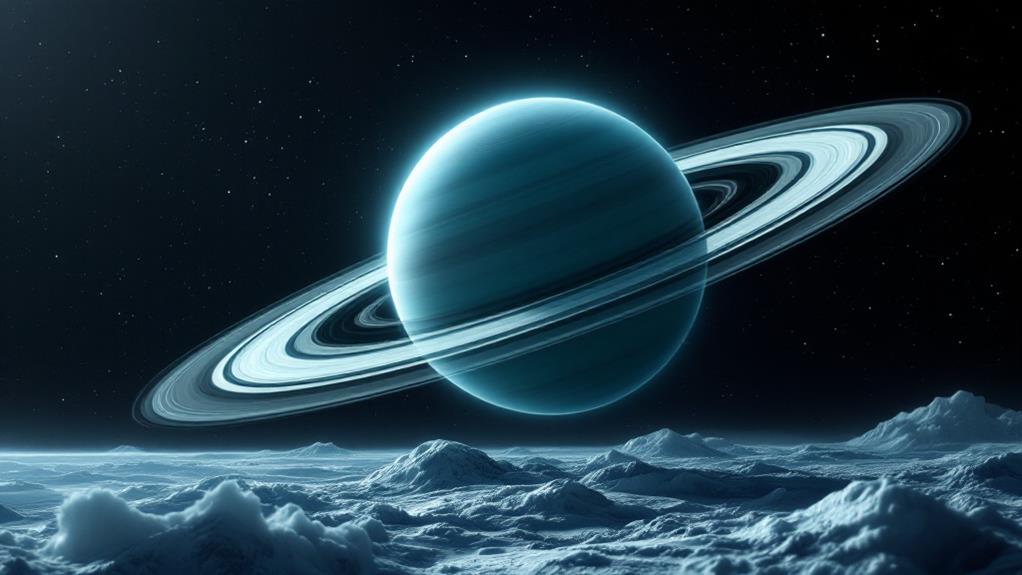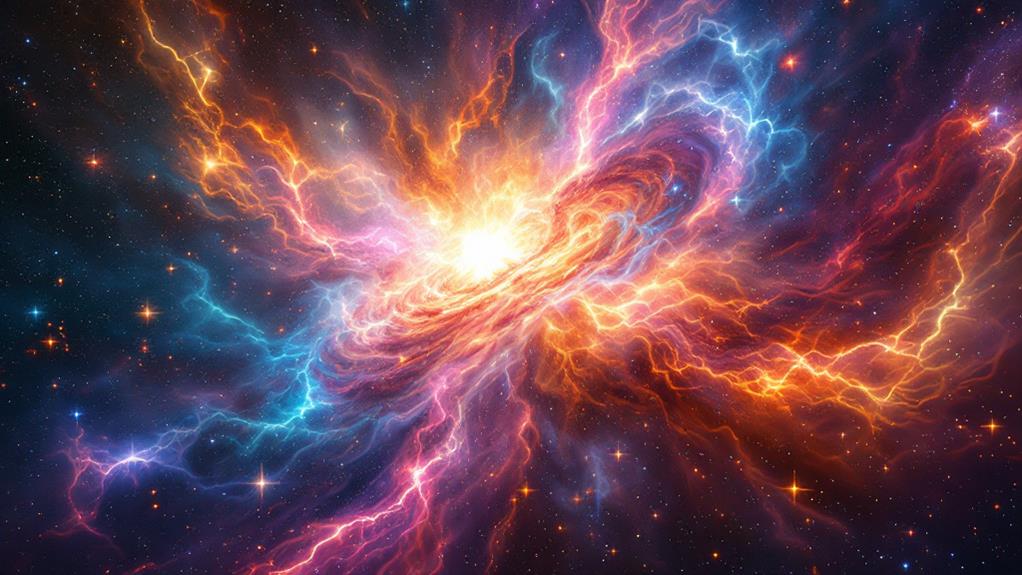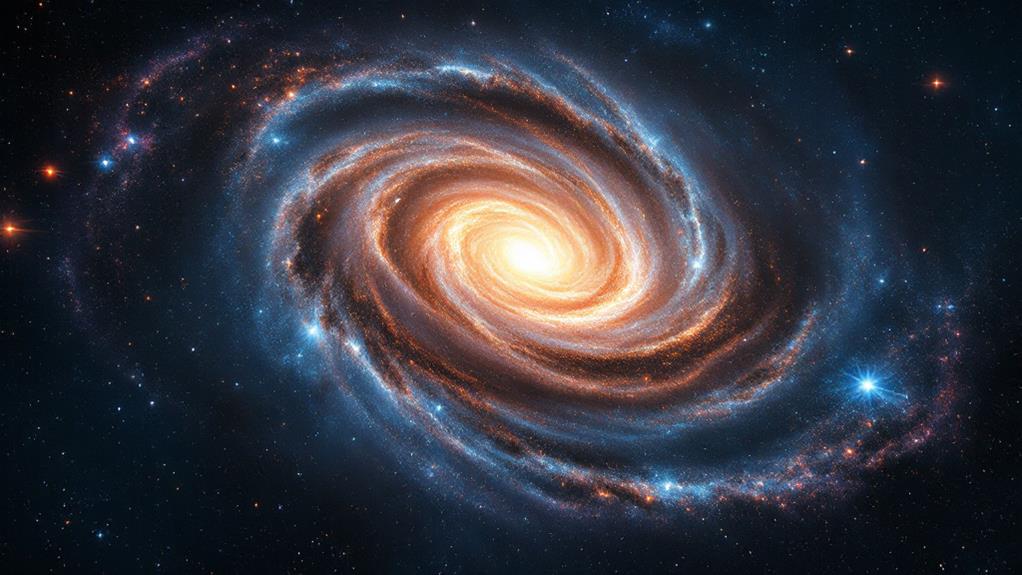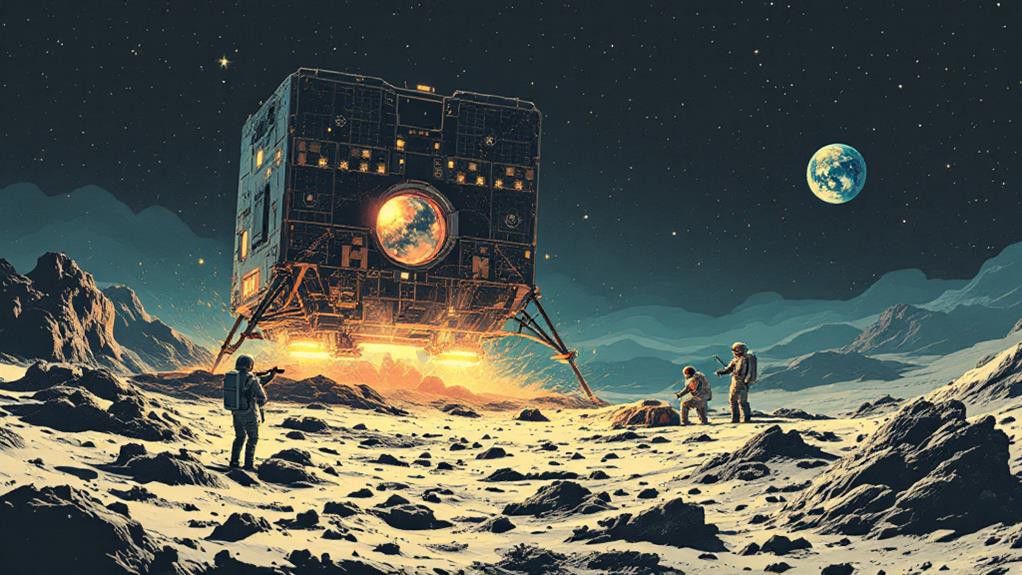Interesting Facts About the Moon: The Earth’s Celestial Companion
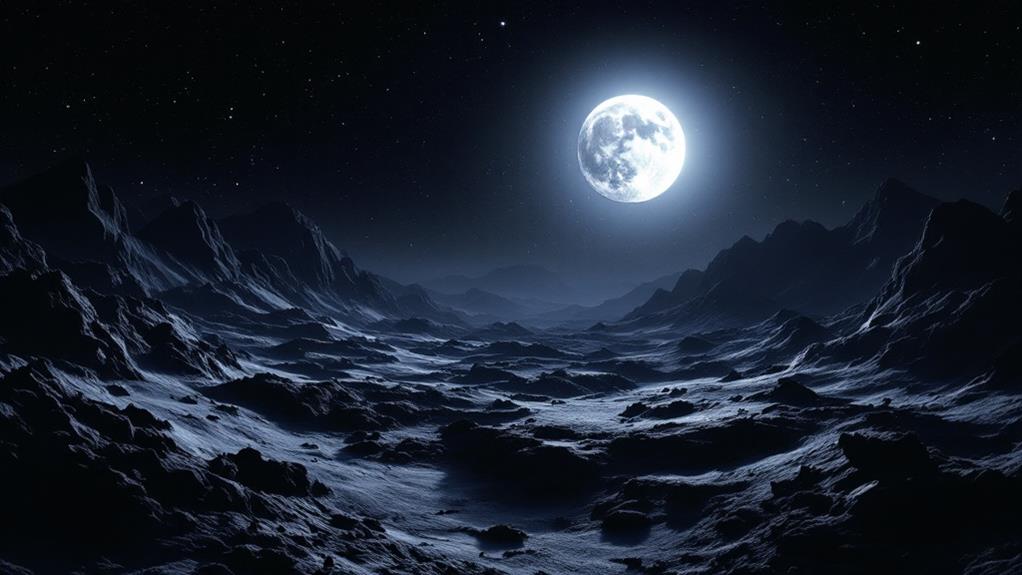
Uncover how the Moon, Earth's celestial companion, was born from a colossal cosmic collision as per the Giant Impact Hypothesis. Its surface is a tapestry of ancient volcanic plains called maria, and over 300,000 craters sketch a portrait of its violent past. This dusty companion pulls Earth's tides with its gravity, orchestrating the daily ebb and flow. Through time, the Moon has guided human cultures, inspiring myths, lunar calendars, and gardening by its phases. The Apollo Missions forever changed our relationship with it, and future missions aim for more exploration. There's so much more awaiting your curiosity.
Formation and Origin
The Moon's formation and origin have intrigued scientists for centuries. As you explore the mysteries of lunar formation, you'll encounter several fascinating lunar theories. One of the most prominent is the Giant Impact Hypothesis. This theory suggests that a Mars-sized body collided with the early Earth, and the debris eventually coalesced to form the Moon. It's an enthralling idea that explains much about the Moon's unique characteristics.
Understanding moon geology is essential to piecing together its history. The Moon's surface is marked by vast plains called maria, formed by ancient volcanic activity. You'll find that the highlands, or terrae, are older and heavily cratered, revealing a storied past impacted by numerous collisions with asteroids and comets. These geological features provide clues to the Moon's evolution and the processes that shaped it.
Phases and Cycles
Gaze up at the night sky, and you'll notice that the Moon's appearance changes regularly. These changes, known as moon phases, are part of a fascinating process called lunar cycles. As the Moon orbits Earth, sunlight illuminates different portions, creating distinct phases that repeat roughly every 29.5 days.
Commence with the new moon, when the Moon is between Earth and the Sun, making it nearly invisible in the sky. Then, as the Moon moves in its orbit, you'll see a sliver of light, known as the waxing crescent. This phase gradually grows until you reach the primary quarter, where half of the Moon is visible. Continue watching as it becomes a waxing gibbous, leading to the full moon, when the entire face shines brilliantly.
The cycle doesn't stop there. After the full moon, the light starts to wane. The waning gibbous phase leads to the last quarter, then the waning crescent, and ultimately back to the new moon. Understanding these phases offers insight into the Moon's constant dance around Earth. So, next time you glance skyward, remember you're witnessing a timeless celestial rhythm: the lunar cycles.
Surface and Craters
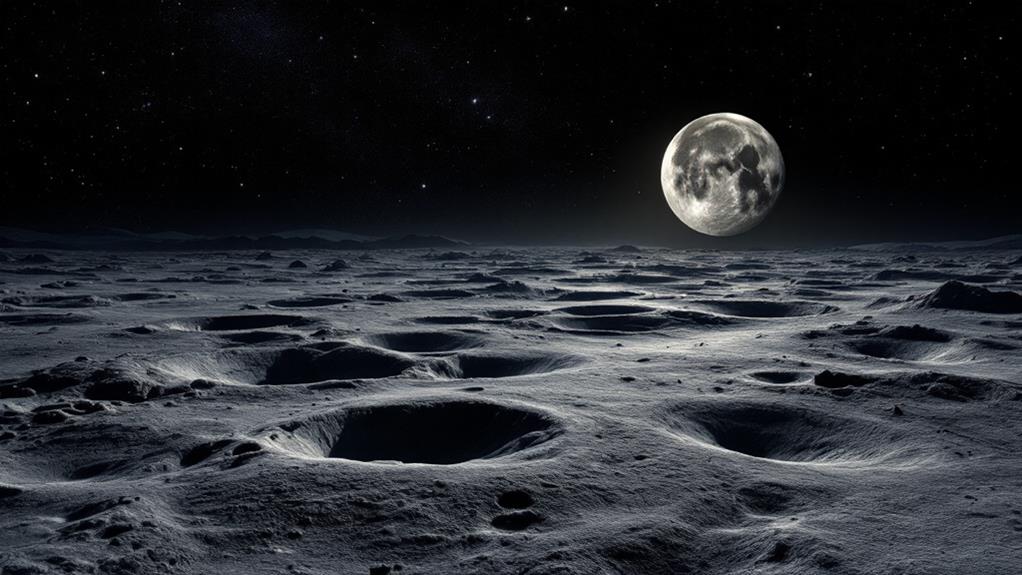
Observing the Moon's phases offers a glimpse into the dynamic nature of our celestial neighbor, but there's more to investigate beyond its changing light. The Moon's surface and craters reveal a fascinating story about its formation and evolution. As you examine lunar geology, you'll uncover that the Moon's surface is covered with a dusty layer called regolith, formed by continuous meteorite impacts. These impacts have shaped the Moon's landscape over billions of years, leaving behind a rich impact history.
Here are three intriguing aspects of the Moon's surface and craters:
- Craters Galore: The Moon is home to over 300,000 craters larger than 1 km in diameter. These craters, varying in size and depth, are a reflection of the Moon's tumultuous past, as they've been formed by countless asteroid and comet collisions.
- Sea of Tranquility: Despite its name, the Moon's maria (Latin for "seas") are vast, flat plains of basaltic lava flows. They provide a stark contrast to the rugged highlands, showcasing the Moon's volcanic activity from ancient times.
- The Largest Crater: The South Pole–Aitken Basin is the largest and one of the oldest known impact structures in the solar system, offering invaluable insights into lunar geology.
Lunar Exploration History
Commence on an expedition through time as you investigate the rich tapestry of lunar exploration history. You'll find it filled with remarkable lunar landings and groundbreaking rover missions. Space agencies across the globe have spearheaded these endeavors, each contributing to our understanding of lunar geology. The infamous Apollo missions, for instance, marked humanity's initial steps on the Moon. Astronaut experiences from these missions have been indispensable, providing firsthand insights into the Moon's surface and conditions.
Exploration technology has evolved tremendously since those early days. From the primary lunar landings to sophisticated rover missions, advancements have allowed for more detailed study of the Moon. These missions faced significant challenges, from harsh lunar temperatures to communication delays. However, they succeeded in collecting essential lunar samples, which continue to offer clues about the Moon's origins and composition.
The collaboration among diverse space agencies has been pivotal. Together, they've overcome mission challenges and pushed the boundaries of what's possible in space exploration. As you examine this history, you'll see how each mission built upon the last, weaving a narrative of exploration and revelation that continues to inspire future lunar endeavors.
Influence on Earth
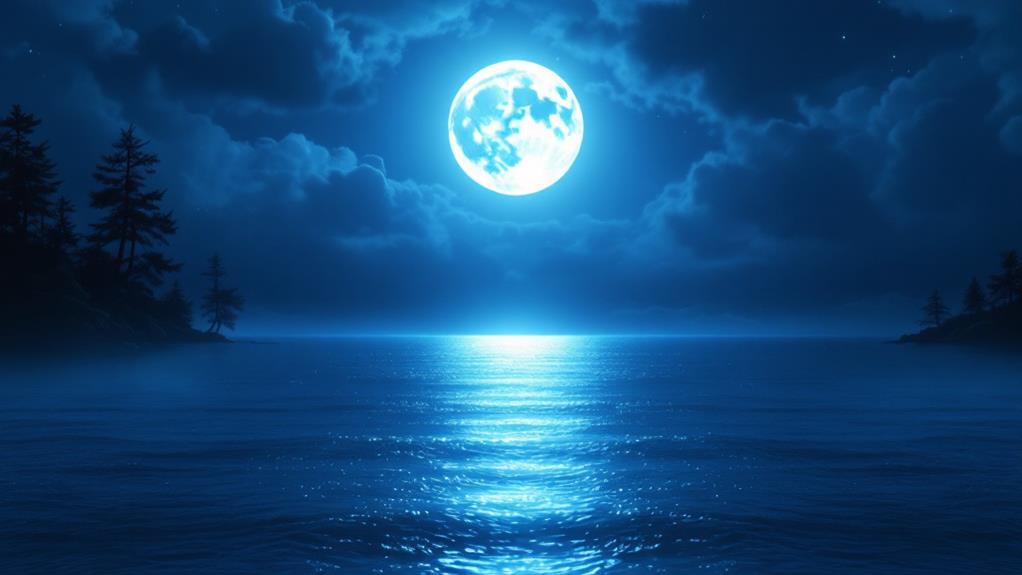
The Moon's influence on Earth is profound and multifaceted, shaping everything from tides to cultural myths. You might not realize it, but the Moon plays a significant role in your daily life. Its phases have guided humans for millennia, leading to the creation of lunar calendars that helped ancient civilizations track time. The Moon's presence has inspired countless myths and legends, enriching our cultural tapestry with moon mythology.
Besides cultural impacts, the Moon affects practical aspects of life too. Moon gardening, for instance, is a practice where gardeners plant and harvest according to the moon phases, believing it improves plant growth. This ancient technique is still popular among gardeners looking to align with nature's rhythms.
For those interested in the scientific and aesthetic aspects, here's how the Moon influences us:
- Lunar Eclipses: These celestial events captivate skywatchers, offering unique opportunities for moon photography.
- Lunar Geology: Studying the Moon's surface helps us understand Earth's geological history.
- Moon Tourism: With advancements in space travel, visiting the Moon could become a reality, offering new insights and experiences.
In essence, the Moon continues to captivate and influence us in myriad ways.
Tides and Gravitational Pull
Have you ever wondered why the ocean's tides ebb and flow? The answer lies in the gravitational pull of the moon. As the moon orbits Earth, it exerts a force that causes the water in our oceans to bulge out in its direction, creating high tides. On the opposite side of the Earth, another high tide occurs due to the centrifugal force from the Earth's rotation. These tidal effects are powerful, affecting not just the ocean's surface but also the crust and atmosphere.
The moon phases play an essential role in the strength of these tides. When the sun, Earth, and moon align during full and new moons, the gravitational forces combine to produce spring tides, which are the most extreme high and low tides. Conversely, during the initial and third quarters, when the sun and moon form a right angle with Earth, we experience neap tides, which are less pronounced.
Understanding the moon's gravitational influence helps you appreciate how it governs the rhythmic dance of the tides. The regular rise and fall of sea levels, driven by lunar forces, impact marine life, coastal ecosystems, and even human activities along the shoreline.
Myths and Legends
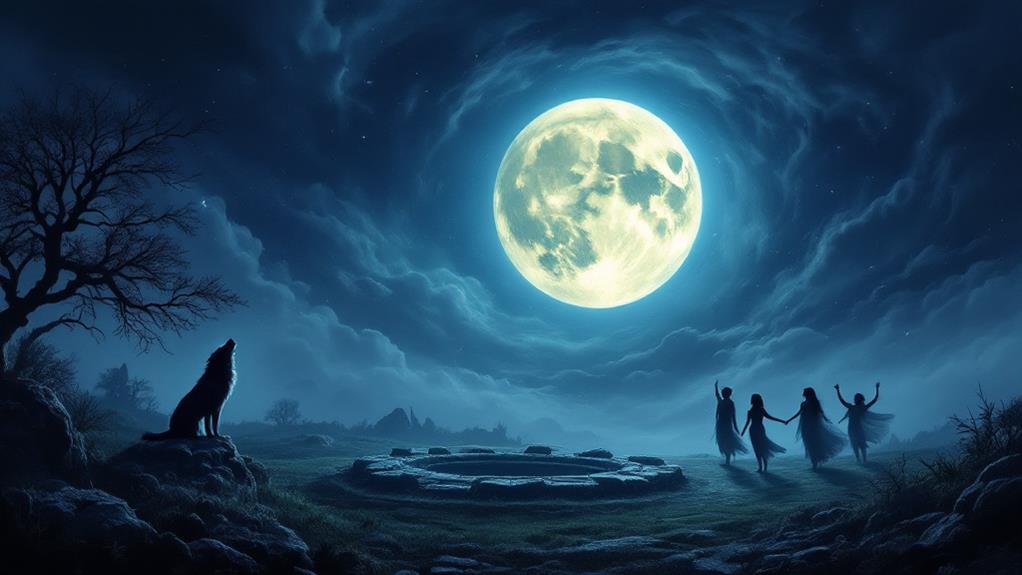
Moonlit nights have always sparked the human imagination, giving rise to countless myths and legends across cultures. The moon's enchanting glow and ever-changing phases have inspired celestial stories that explain its mystery and influence over Earth's inhabitants. In many moon myths, the moon is portrayed as a symbol of femininity, with its cycles mirroring the tides and women's natural rhythms.
Lunar legends often feature mythological creatures and gods. Here are some fascinating examples:
- Chang'e and the Jade Rabbit: A beloved Chinese folklore tale tells of Chang'e, a woman who ascends to the moon after drinking an elixir of immortality. She lives there with the Jade Rabbit, who continuously pounds medicinal herbs.
- Tsukuyomi: In Japanese mythology, Tsukuyomi is the moon god who represents the moon's calm and serene nature. His story is intertwined with cultural symbolism, as he governs the night and maintains balance with his sister, Amaterasu, the sun goddess.
- Selene and Endymion: Greek celestial stories feature Selene, the moon goddess, who falls in love with the mortal Endymion. Her love represents the moon's eternal watch over the Earth and its inhabitants.
These tales highlight the moon's enduring allure and its profound impact on human culture.
Future Lunar Missions
As myths and legends celebrate the moon's mystique, humanity's focus now shifts to exploring its potential through future lunar missions. You're standing on the brink of a new chapter where the moon isn't just a distant orb in the sky, but a destination full of promise. Robotic missions are paving the way for human colonization by scouting locations for a permanent lunar habitat. These habitats could support scientific research and even lunar agriculture, allowing you to envision a more sustainable presence on the moon.
Resource mining is another exciting frontier. The moon's surface holds valuable materials such as helium-3, which could revolutionize energy production back on Earth. Imagine the possibilities if nations work together in international collaboration to reveal these resources. Such efforts would not only advance technology but also foster peaceful relations between countries.
Space tourism is also on the horizon, offering you the chance to experience the moon's wonder firsthand. As these missions unfold, the moon becomes a stepping stone for deeper space exploration. You're part of an extraordinary expedition, watching as humanity transforms dreams of the moon into reality through innovation and exploration.
Moon's Role in Culture
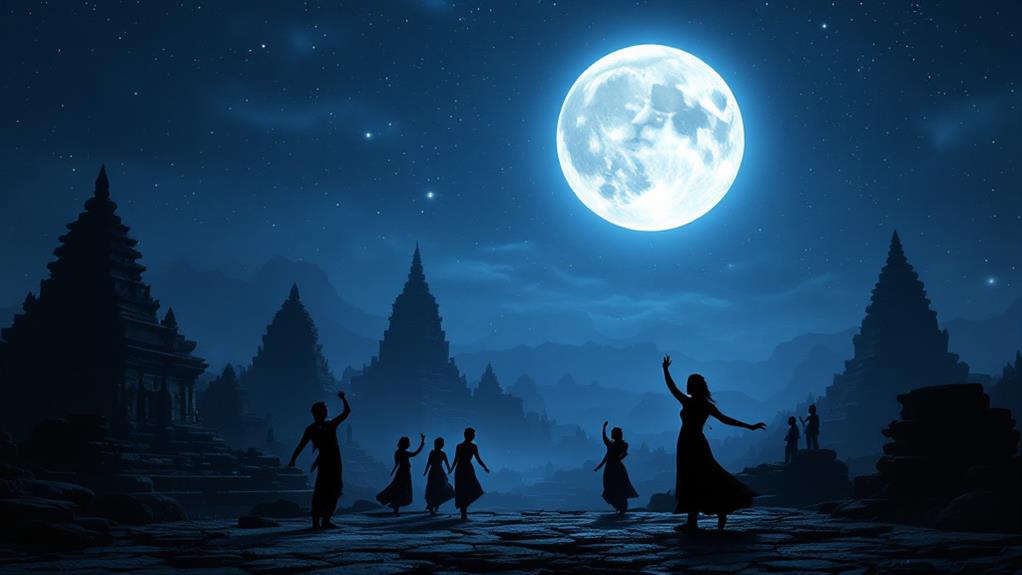
Throughout history, the moon has captivated human imagination and held a significant place in cultural narratives across the globe. Its presence has inspired countless myths, legends, and traditions. Moon symbolism is profound and diverse, representing everything from femininity and fertility to cycles and change. Many cultures view the moon as a powerful symbol of life's rhythms and the passage of time.
You'll find lunar festivals celebrated around the world, each with unique customs and meanings. Here are a few examples:
- Mid-Autumn Festival: Celebrated in China and Vietnam, this festival honors the harvest and the full moon. People gather to admire the moon, eat mooncakes, and light lanterns.
- Tsukimi: In Japan, Tsukimi, or "moon gazing," celebrates the autumn harvest. Families make offerings of rice dumplings and seasonal produce to the moon, enjoying its beauty.
- Eid al-Fitr: In Islamic culture, the sighting of the new moon signals the end of Ramadan, marking Eid al-Fitr, a time of feasting and celebration.
